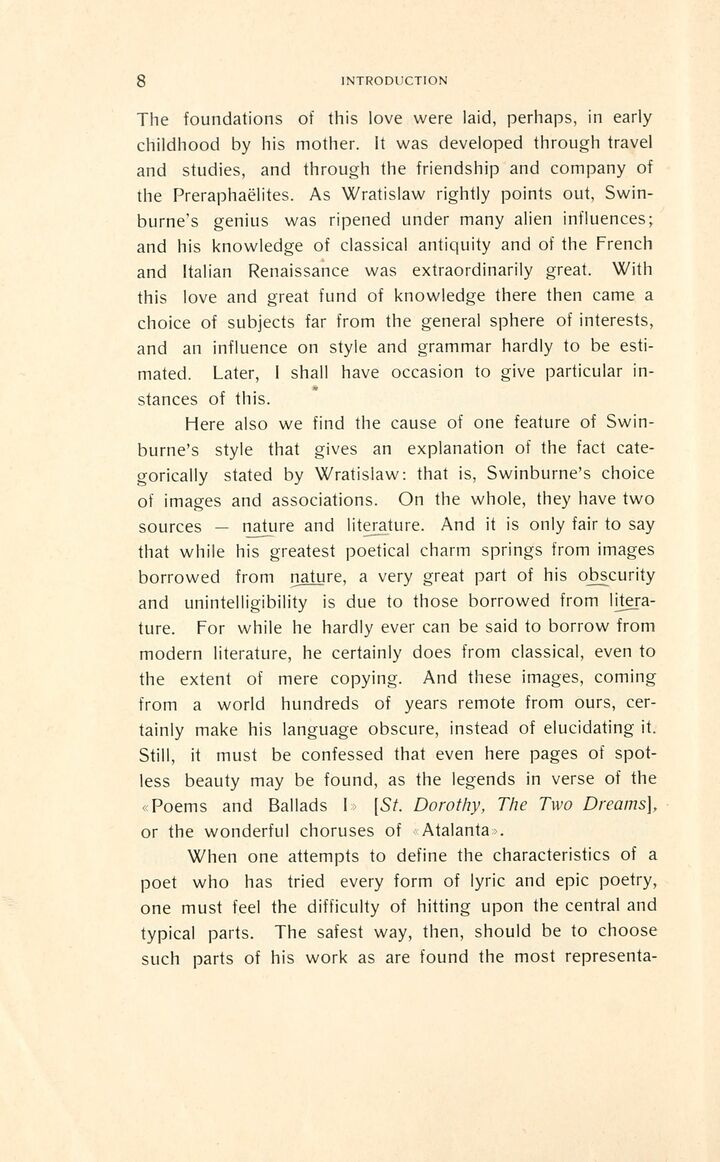
Full resolution (JPEG) - On this page / på denna sida - Sidor ...

<< prev. page << föreg. sida << >> nästa sida >> next page >>
Below is the raw OCR text
from the above scanned image.
Do you see an error? Proofread the page now!
Här nedan syns maskintolkade texten från faksimilbilden ovan.
Ser du något fel? Korrekturläs sidan nu!
This page has never been proofread. / Denna sida har aldrig korrekturlästs.
8
INTRODUCTION
The foundations of this love were laid, perhaps, in early
childhood by his mother. It was developed through travel
and studies, and through the friendship and company of
the Preraphaelites. As Wratislaw rightly points out,
Swinburne’s genius was ripened under many alien influences;
and his knowledge of classical antiquity and of the French
si
and Italian Renaissance was extraordinarily great. With
this love and great fund of knowledge there then came a
choice of subjects far from the general sphere of interests,
and an influence on style and grammar hardly to be
estimated. Later, I shall have occasion to give particular
instances of this.
Here also we find the cause of one feature of
Swinburne’s style that gives an explanation of the fact
categorically stated by Wratislaw: that is, Swinburne’s choice
of images and associations. On the whole, they have two
sources — nature and literature. And it is only fair to say
that while his greatest poetical charm springs from images
borrowed from nature, a very great part of his obscurity
and unintelligibility is due to those borrowed from
literature. For while he hardly ever can be said to borrow from
modern literature, he certainly does from classical, even to
the extent of mere copying. And these images, coming
from a world hundreds of years remote from ours,
certainly make his language obscure, instead of elucidating it.
Still, it must be confessed that even here pages of
spotless beauty may be found, as the legends in verse of the
«Poems and Ballads I» [5/. Dorothy, The Two Dreams],
or the wonderful choruses of Atalanta>.
When one attempts to define the characteristics of a
poet who has tried every form of lyric and epic poetry,
one must feel the difficulty of hitting upon the central and
typical parts. The safest way, then, should be to choose
such parts of his work as are found the most representa-
<< prev. page << föreg. sida << >> nästa sida >> next page >>